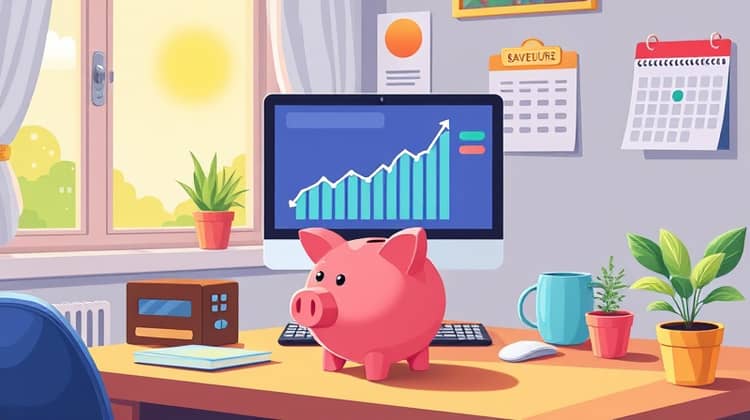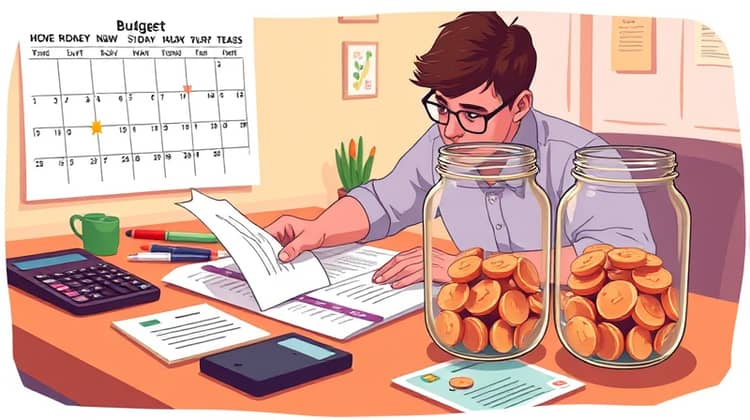Emergency Funds: Your Step-by-Step Guide to Financial Security

In today's unpredictable world, having a solid financial backup plan is no longer considered a luxury; it's a necessity. An emergency fund serves as a financial safety net to help you navigate life's unexpected hurdles without derailing your financial stability. In this guide, we will explore the concept of emergency funds, why they are vital for your financial security, and how to effectively build and manage one.
By following the steps outlined in this article, you'll be empowered to take control of your finances and create a buffer that will give you peace of mind in times of crisis. Whether you're just starting on your financial journey or looking to bolster your existing savings, an emergency fund is a crucial component of sound financial planning.
What is an Emergency Fund?

An emergency fund is a dedicated savings account that is set aside to cover unexpected expenses or financial emergencies. These emergencies can include sudden medical expenses, car repairs, job loss, or any unplanned financial burden that may arise.
The purpose of an emergency fund is to provide financial security and peace of mind, ensuring that you have readily available cash to handle these unforeseen challenges. When you have an emergency fund in place, you are less likely to rely on credit cards or take out loans during difficult times, which can lead to further financial strain.
Establishing an emergency fund is a fundamental step in achieving financial stability. It acts as a buffer that protects you from falling into debt, allowing you to address issues promptly without added stress.
Ultimately, an emergency fund helps you maintain control over your finances and gives you the confidence to face life's uncertainties head-on.
Why You Need One

Having an emergency fund ensures that you are prepared for the unexpected. Life can be unpredictable, and financial emergencies can put a significant strain on your budget.
- It reduces financial stress by providing a safety net during crises.
- You can avoid high-interest debt from credit cards or loans when emergencies arise.
- An emergency fund grants you the freedom to make decisions without financial pressure, such as changing careers or taking time off work.
- It assures your family and loved ones that you have a plan in place to manage unexpected costs.
In essence, an emergency fund is not just a good idea; it's a critical component of your overall financial strategy.
How Much Should You Save?

Determining how much to save in your emergency fund can depend on several factors, including your lifestyle, monthly expenses, and personal circumstances.
- A common recommendation is to save three to six months' worth of living expenses.
- Consider saving more if you have dependents or work in a field with unstable income.
- Evaluate your standard of living and tailor your savings goal accordingly.
The key is to have a cushion that is substantial enough to cover you in times of need while also being realistic according to your financial situation. Aim for a number that provides you with a sense of security without causing undue stress to your budget.
Where to Keep Your Emergency Fund

The location of your emergency fund is just as important as how much you save. You want a place where your money is safe and accessible when you need it.
Choosing the right account can make a significant difference in your financial flexibility.
- High-yield savings accounts offer better interest rates than traditional savings accounts.
- Money market accounts often provide easy access to your funds while earning a higher yield.
- Avoid keeping your emergency fund in stocks or investments that are not easily liquidated and may fluctuate in value.
The ideal account strikes a balance between accessibility and interest earnings, allowing your savings to grow while ensuring you can access them quickly in an emergency.
Steps to Building an Emergency Fund

Starting an emergency fund can seem daunting, but breaking it down into manageable steps can make the process much more approachable.
- Set a specific savings goal for your emergency fund.
- Open a dedicated savings account to keep your emergency fund separate from your everyday funds.
- Automate your savings by scheduling regular transfers to your emergency fund account.
- Monitor your savings progress and adjust your contributions as needed.
Following these steps will help you build a solid emergency fund over time, making it easier to achieve your financial goals.
When to Use Your Emergency Fund

Knowing when to tap into your emergency fund is crucial for its effective management. It is designed for use in genuine emergencies and unplanned expenses, not for regular or discretionary spending.
Before withdrawing from your emergency fund, ask yourself whether the expense is truly an emergency or if it can be handled differently.
Replenishing Your Emergency Fund

After using your emergency fund, it's essential to focus on replenishing it as quickly as possible. Failing to do so can leave you vulnerable to future financial challenges and defeat the purpose of having the fund in the first place.
Take stock of your budget to identify areas where you can temporarily cut costs and redirect those savings back into your emergency fund.
- Assess how much you need to replenish your fund based on recent withdrawals.
- Set a timeline for when you would like to have your emergency fund fully replenished.
- Consider increasing your monthly contributions temporarily until the fund is back to the desired level.
This proactive approach will ensure that your emergency fund remains robust and serves its intended purpose whenever necessary.
Common Mistakes to Avoid

Many people make common mistakes when it comes to managing their emergency funds, which ultimately undermine their financial security.
Understanding these pitfalls can help you sidestep them and maintain a more effective emergency fund.
- Using your emergency fund for non-emergencies or discretionary spending.
- Failing to set a specific savings goal or budget for your emergency fund.
- Neglecting to replenish your emergency fund after using it.
- Not monitoring your savings progress and making adjustments as life circumstances change.
By learning from these missteps, you can ensure that your emergency fund serves its critical function without being compromised.
Conclusion

In conclusion, an emergency fund is a fundamental aspect of financial health that provides invaluable support during unexpected crises. By setting aside money specifically for emergencies, you empower yourself to navigate challenges with confidence.
Building and maintaining an emergency fund requires discipline and foresight, but the peace of mind it offers is well worth the effort.






